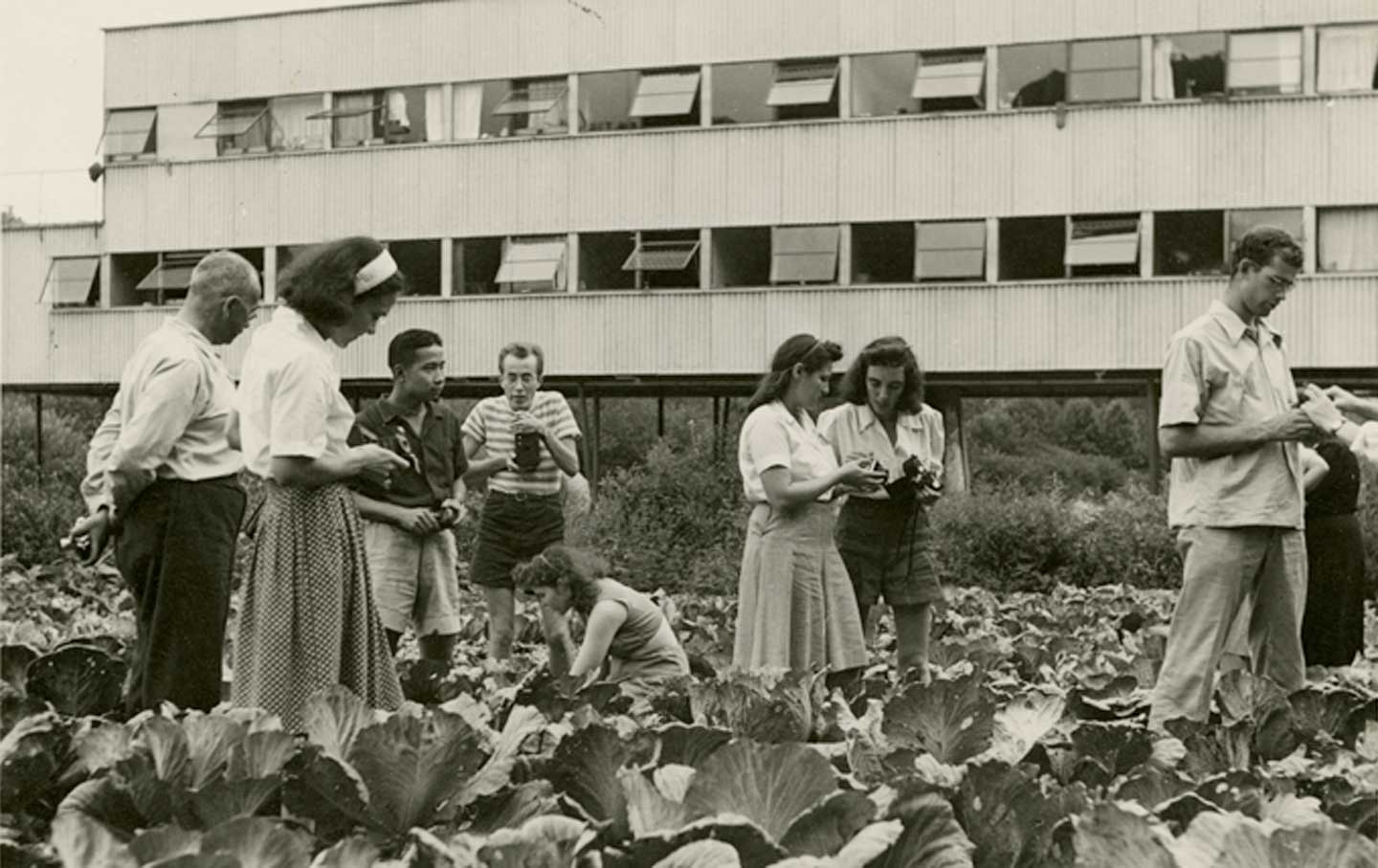For The Nation, Barry Schwabsky writes about the teaching of art, as well as the exhibition of teaching art, in particular the recent exhibitions on Black Mountain College at ICA Boston and Hamburger Bahnhof. Black Mountain College has always been a sort of art world legend–“How can we leave the city behind and recreate this today?”–but perhaps now, as art school tuition has gotten all the more astronomical, the long-shuttered school seems to have increased cultural currency. But how do we represent that in exhibitions without romanticizing it? Here’s Schwabsky in partial below, the full piece via The Nation.
Can art be taught? That question isn’t as old or as hoary as one might imagine. For many centuries, artists were taught, either through a studio apprenticeship or, later, in a formal academy. It only became possible to think of art as something different in the 19th century, when the old system fell apart and it seemed conceivable that anyone could be an artist. But very few people were. Perhaps being an artist was the result of some peculiar inner drive or necessity, some genius that burned in certain kinds of people—something they were born with rather than something that they learned. The question has by now fueled two centuries’ worth of bar banter, family quarrels, and panel discussions. What keeps the conversation going is that many of the people who say that art can’t be taught still make their living by teaching it. Teaching does have its own rewards, and so does trying to learn, whether the learning “takes” or not.
A related question is easier to answer: Can the art of teaching art be exhibited? No, but people keep trying. The ambitious show “Leap Before You Look: Black Mountain College 1933–1957,” at the Institute of Contemporary Art in Boston, is the latest such effort. (It will be on view at the Hammer Museum at the University of California, Los Angeles, from February 21 to May 15, and then at the Wexner Center for the Arts at Ohio State University in Columbus from September 17 to January 1, 2017. A handsome catalog is available from Yale University Press.) In fact, Black Mountain exhibitions have become a genre unto themselves. “Leap Before You Look,” curated by Helen Molesworth, formerly of the ICA/Boston and now at the Museum of Contemporary Art in Los Angeles, is the fourth that I know of. The first, which I saw in 2002, was “Black Mountain College: Una Aventura Americana,” curated by Vincent Katz, at the Museo Nacional Centro de Arte Reina Sofía in Madrid. Then came “Starting at Zero: Black Mountain College 1933–1957,” curated by Caroline Collier and Michael Harrison, at the Arnolfini in Bristol, England, and Kettle’s Yard, University of Cambridge, in 2005 and 2006. And last summer, I paid a visit to the Hamburger Bahnhof Museum für Gegenwart in Berlin, which mounted “Black Mountain: An Interdisciplinary Experiment 1933–1957,” curated by Eugen Blume and Gabriele Knapstein.
Why the recurring preoccupation with a short-lived, unaccredited school at the back of beyond, which never had enough students to pay its way? It could be the school’s believe-it-or-not story and how, the more you learn about it, the more unlikely it seems. The tale begins in 1933, when an unorthodox, arrogant classics professor named John Andrew Rice and several of his colleagues were purged from Rollins College in Florida. A number of their fellow professors resigned in protest, and some students withdrew as well. Bent on starting a college of their own, they found a complex of buildings for rent near Asheville, North Carolina, and some start-up money—but not much. At first, the faculty worked without salaries, but at least they owned the joint: The papers of incorporation specified that “the sole membership of the corporation” would be “the whole body of the faculty.” In other words, there was no board of directors and no non-teaching administration either, so the instructors had no other masters than themselves.
There was splendor and misery at Black Mountain, which was run according to the will of its teachers and, to a great extent, its students. The faculty believed that the curriculum should reflect what the students needed or desired to learn. This principle runs contrary not only to the present conception of the student as a consumer or client who is to be supplied with certain knowledge, but also to the designs of the conservative governors of North Carolina, Wisconsin, and other states, who believe that they should have the final say over what’s being taught and who’s doing the teaching at their state colleges and universities. At Black Mountain, teachers and students committed themselves to shared undertakings, the educational equivalent of socialism: from each according to his abilities, to each according to his needs.
*Image above: A photography class in a cabbage patch at Black Mountain College. (Barbara Morgan / Courtesy of Western Regional Archives, State Archives of North Carolina)
